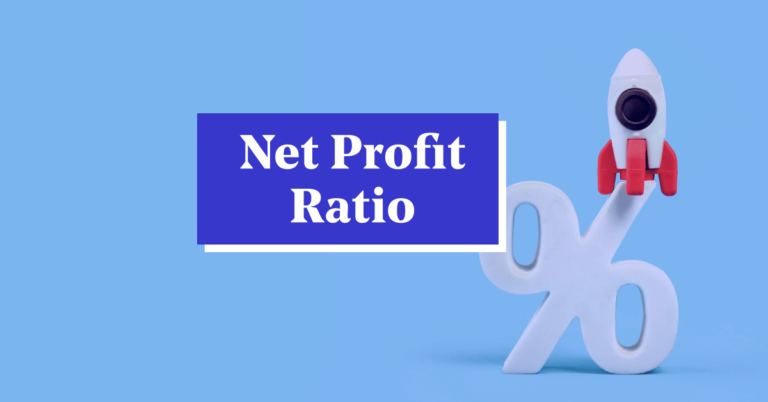The Net Worth to Outside Liabilities Ratio is a crucial financial metric used to assess the financial health and stability of a business. It provides insights into how well a company can meet its obligations using its own equity. Whether you’re an investor, business owner, or financial analyst, understanding this ratio can help you evaluate a company’s risk profile and make informed financial decisions.
In this blog, we will explore the definition, formula, significance, and interpretation of the Net Worth to Outside Liabilities Ratio, along with practical examples to help you better understand its importance.
What is the Net Worth to Outside Liabilities Ratio?
The Net Worth to Outside Liabilities Ratio is a financial measure that compares a company’s net worth (also known as equity) to its external liabilities (debts and obligations). This ratio is important for analyzing a company’s ability to cover its debts with its own equity.
A higher ratio indicates that the company has a strong financial position, with sufficient equity to cover its liabilities. Conversely, a lower ratio may suggest financial risk, indicating that the company has more liabilities than equity, which could lead to solvency issues.

Formula for the Net Worth to Outside Liabilities Ratio
The formula to calculate the Net Worth to Outside Liabilities Ratio is:Net Worth to Outside Liabilities Ratio=Net Worth (Equity)Outside Liabilities (Debts + Other Liabilities)\text{Net Worth to Outside Liabilities Ratio} = \frac{\text{Net Worth (Equity)}}{\text{Outside Liabilities (Debts + Other Liabilities)}}Net Worth to Outside Liabilities Ratio=Outside Liabilities (Debts + Other Liabilities)Net Worth (Equity)
Where:
- Net Worth (Equity) is the difference between a company’s total assets and total liabilities, calculated as:Net Worth=Total Assets−Total Liabilities\text{Net Worth} = \text{Total Assets} – \text{Total Liabilities}Net Worth=Total Assets−Total Liabilities
- Outside Liabilities represent all the external obligations a company owes, such as loans, accounts payable, and other financial liabilities.
How to Calculate Net Worth to Outside Liabilities Ratio
Let’s take an example to understand how to calculate the Net Worth to Outside Liabilities Ratio:
Example:
- Total Assets of the company = ₹10,00,000
- Total Liabilities of the company = ₹6,00,000
- Outside Liabilities (Debts + Other Liabilities) = ₹4,00,000
Now, calculate the Net Worth:Net Worth=Total Assets−Total Liabilities\text{Net Worth} = \text{Total Assets} – \text{Total Liabilities}Net Worth=Total Assets−Total Liabilities Net Worth=₹10,00,000−₹6,00,000=₹4,00,000\text{Net Worth} = ₹10,00,000 – ₹6,00,000 = ₹4,00,000Net Worth=₹10,00,000−₹6,00,000=₹4,00,000
Finally, calculate the Net Worth to Outside Liabilities Ratio:Net Worth to Outside Liabilities Ratio=₹4,00,000₹4,00,000=1.0\text{Net Worth to Outside Liabilities Ratio} = \frac{₹4,00,000}{₹4,00,000} = 1.0Net Worth to Outside Liabilities Ratio=₹4,00,000₹4,00,000=1.0
In this example, the ratio is 1.0, meaning the company’s net worth is equal to its external liabilities.
Interpretation of the Net Worth to Outside Liabilities Ratio
Understanding how to interpret this ratio is key to assessing a company’s financial strength.
- Ratio > 1: A ratio greater than 1 indicates that the company has more equity than liabilities. This suggests a solid financial position, as the company has enough equity to cover its obligations. Investors view this as a positive indicator of financial stability.
- Ratio = 1: A ratio of 1 means that the company’s equity is exactly equal to its liabilities. While the company can meet its obligations, it may have limited flexibility in terms of financing future growth.
- Ratio < 1: A ratio less than 1 suggests that the company has more liabilities than equity. This may indicate financial distress or over-leveraging, and could be a warning sign for potential investors. Such a company might struggle to cover its debts without relying on external financing.
Significance of the Net Worth to Outside Liabilities Ratio
The Net Worth to Outside Liabilities Ratio is significant for several reasons:
- Financial Health Assessment: This ratio provides a clear picture of a company’s ability to meet its obligations using its own equity. A high ratio indicates a financially healthy company, while a low ratio signals potential financial risk.
- Creditworthiness Evaluation: Lenders and creditors often use this ratio to evaluate a company’s creditworthiness. A higher ratio suggests that the company has a lower risk of defaulting on loans or other liabilities, making it easier to secure financing.
- Investor Confidence: A strong Net Worth to Outside Liabilities Ratio can boost investor confidence. Investors prefer companies with lower liabilities and higher equity, as these businesses are generally more resilient during economic downturns.
- Long-Term Sustainability: Companies with a higher ratio are better positioned for long-term growth and sustainability. They can use their equity to finance new projects or expansion, without heavily relying on external debt.
How to Improve the Net Worth to Outside Liabilities Ratio
If a company has a low Net Worth to Outside Liabilities Ratio, there are several ways it can improve the ratio:
- Pay Down Debt: One of the most effective ways to improve the ratio is by reducing external liabilities. Paying off debt reduces the denominator in the ratio, leading to a higher value.
- Increase Net Worth: Increasing equity through retained earnings or issuing new shares can improve the ratio. By boosting net worth, companies strengthen their balance sheets and improve their financial position.
- Optimize Asset Management: Efficient management of assets, such as improving inventory turnover or selling non-core assets, can help a company increase its net worth and reduce liabilities.
How to Improve the Net Worth to Outside Liabilities Ratio
If a company has a low Net Worth to Outside Liabilities Ratio, there are several ways it can improve the ratio:
- Pay Down Debt: One of the most effective ways to improve the ratio is by reducing external liabilities. Paying off debt reduces the denominator in the ratio, leading to a higher value.
- Increase Net Worth: Increasing equity through retained earnings or issuing new shares can improve the ratio. By boosting net worth, companies strengthen their balance sheets and improve their financial position.
- Optimize Asset Management: Efficient management of assets, such as improving inventory turnover or selling non-core assets, can help a company increase its net worth and reduce liabilities.
FAQs on Net Worth to Outside Liabilities Ratio
Q1: Why is the Net Worth to Outside Liabilities Ratio important for businesses?
The ratio helps businesses understand their financial stability and assess their ability to meet obligations using equity. It is an important measure for evaluating risk and making strategic decisions about debt management and future investments.
Q2: What is a good Net Worth to Outside Liabilities Ratio?
A ratio higher than 1 is generally considered good, as it indicates that a company has more equity than liabilities. A lower ratio may raise concerns about financial solvency and debt management.
Q3: How does this ratio affect borrowing?
Lenders use this ratio to assess a company’s creditworthiness. A higher ratio suggests a lower risk of default, which may make it easier to secure loans at favorable terms.
Q4: Can the Net Worth to Outside Liabilities Ratio fluctuate over time?
Yes, this ratio can fluctuate based on changes in a company’s net worth or liabilities. For example, taking on new debt or experiencing significant profits can affect the ratio.
Conclusion
The Net Worth to Outside Liabilities Ratio is an essential tool for assessing a company’s financial health. By comparing equity to external liabilities, this ratio helps determine whether a business can meet its obligations with its own resources. A strong ratio indicates financial stability and creditworthiness, while a low ratio can signal potential financial risks.
Understanding and monitoring this ratio is critical for businesses, investors, and lenders to ensure long-term financial success and growth.



